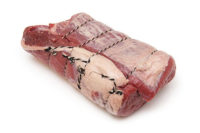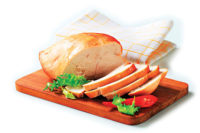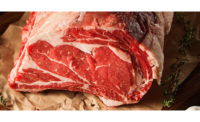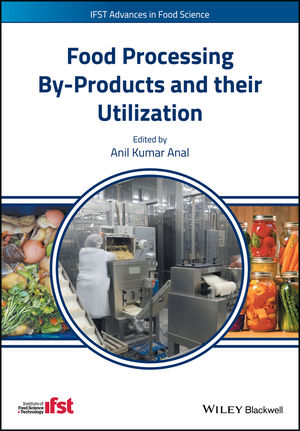Processing Tech
How likely are consumers to embrace changes to whole-muscle products?

Is different always better? Whole-muscle products are employing new cuts, which introduce consumers to unique flavors and textures; however, consumers may view these new products as being unsafe, instead of just different.
In recent years, consumers may have noticed chicken breasts that appear tougher and more texturized. This condition is known as white striping or woody breast and is caused from increased collagen and degeneration of fibers. In the race to grow larger birds faster (the average bird is slaughtered at 6.24 pounds at 47 days old today), a side effect has occurred: white striping or a muscle disorder characterized by its white striations that causes more fat, less water retention and decreased protein in chicken breasts.
“Consumers describe these products as rubbery, chewy, crunchy,” says Casey Owens-Hanning, Ph.D., Center of Excellence for Poultry Science, University of Arkansas, Fayetteville, Ark. “If they get a breast with a lot of connective tissue, they say it feels like gristle.”
Academic research concludes these changes are mainly due to genetics.
“There is research being conducted at the genetic level to see why parent lines are producing lines that have this issue,” says Josh Herring, Ph.D., professor, department of food and animal sciences, Alabama A&M University, based in Normal, Ala. “There has been discussion to going back to older genetic lines to evaluate differences and why it changed.”
The pork industry also faced challenges in the late 1960s when it changed how it raised pigs. “The same thing happened in pork as farmers got away from raising pigs for fat and raised them for lean meat,” Herring says. “This occurred so much that they had to change the way hogs were graded in 1968 because the meat decreased in tenderness and quality concerns arose.”
Because chickens can be produced so fast and genetic lines can be changed rapidly, white striping should be a short-lived issue and already would be resolved if there were enough agreement as to what all it effects, Herring says.
Poultry plants are certainly becoming more proactive in identifying and sorting out the worst breasts with white striping.
“White striping is more of a quality issue than a safety issue,” Owens says. “Premium pieces of meat are closest to the skin, and most affected by these changes.”
Marketing new products
In the marketplace, convenience continues to trend with portable protein packs and vacuum packaged individual chicken breasts sold together, says Owens. “These products will only continue, especially with big birds,” she says.
Dried meat products will also remain popular as snacks, Herring says.
In general, consumers’ desire for clean labels means ingredients such as phosphates are being removed, which is important for its water holding capacity.
“Those types of changes can play into product quality and yield issues, so other ingredients have to be added to help with their formulation,” Owens says. “Simplified labels are on the radar of consumers because they want more transparency in operations.”
Plant ingredients, for example, will be added to marinades more for whole-muscle products, says Herring. “With cleaner labels being a push, there will be more interest in reducing nitrites/nitrates and finding plant ingredients that can help that consumer desire,” he says.
Plant material also will be incorporated into sausages for antioxidant and fiber value, says Herring.
Products that are minimally processed, hormone free or gestation crate free, and address other aspects of animal welfare tend to be leaner cuts, so cutting techniques and ingredients become even more important, says Christopher Hansen, corporate executive chef, OSI Group, based in Aurora, Ill.
“Those cuts can be lean so they require the right techniques to not over-process them or dry them out,” he says. “We want to replicate the restaurant experience within a reasonable price point.”
Despite the popularity of clean labels, companies still provide enhanced products that use solutions that enhance their fat content, look and flavor, says Chris Fuller, consultant with Fuller Consulting LLC and director of Stockyards at US Foods, San Diego.
“The majority of customers that I deal with want clean labels, but there’s a large segment of the consumer base that wants a good eating experience at a lower cost, so they buy enhanced meat,” Fuller says. “Enhanced whole-muscle beef cuts are a good business segment for those in it, and aren’t decreasing but growing.”
Using new cutting technique
Consumers are interested in the story behind their meat or poultry product today, and it’s important to share it with them, such as what farms the animals came from, whether they are free-range chickens, grass-fed beef, etc.
More premium or higher quality cuts are available today, as well. In addition, whole-muscle products are using under-utilized cuts of meat and employing new techniques to manipulate the texture and taste of their products, Hansen says.
“Consumers are more willing to experiment with more flavor, fat and different cooking methods, not just what is lean and cooks quickly,” Fuller says.
Social media tools including Facebook, Pinterest, Instagram and other applications provide shoppers with new tools to learn about different cuts of meat at grocery or restaurants, he says.
That being said, any variation in what consumers have come to expect from their poultry or meat product can worry them. For example, white striping feeds into the stigma that anything “off” about poultry will make consumers sick, Fuller says. And the same sentiment applies to meat products, as well.
“With beef, consumers are more comfortable with changes,” Fuller says. “They are aware of color variations. They may even be excited to try Flat Iron steaks or other value cuts, but they still look different to them. So if the steak is darker or has an off odor or livery taste, then they may jump to conclusions that the meat is not good, while the differences are attributed to the cut or packaging.”
Increased education on the different meat cuts available to consumers and their characteristics remains important.
“The new cuts are actually designed to help consumers by giving them better options,” says Kari Underly, principal and master butcher at Chicago-based Range Inc. “They are used to seeing these cuts in other forms, such as the Flat Iron steak cut that used to be in pot roast. Now the cuts are processed differently to provide them with a new eating experience, smaller portions and healthier diet.”
Also, beef in reduced oxygen packaging or vacuum packaging has a different appearance than other products in the retail case, Fuller says. “So people may not understand why their color is different and think there is something wrong,” he says.
Beef in sealed air packaging is still aging, so it gives off a gassy smell when the package opens, notes Underly, even if it’s still good.
Jaccard meat tenderizers enhance the flavor of whole-muscle beef products, but have also run into their own challenges because their products need to be labeled as blade tenderized.
“Some consumers are steering away from these products because they think they are low quality and chefs have negative connotations of mechanically tenderized meat, but tenderizers do enhance the meat and create better products,” says Fuller.
So, consumers are willing to try out new products and cuts, but increased education on how they differ from traditional products remains important. NP
Looking for a reprint of this article?
From high-res PDFs to custom plaques, order your copy today!










